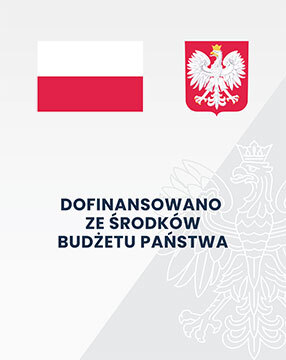Każda reprezentacja jest interpretacją – w stronę hermeneutycznej koncepcji architektury informacji
Marcin Roszkowski
http://orcid.org/0000-0001-7396-4685
Afiliacja: Katedra Informatologii, Wydział Dziennikarstwa, Informacji i Bibliologii,Uniwersytet Warszawski, Polska
Abstrakt
Cel/Teza: Celem artykułu jest próba charakterystyki architektury informacji (AI) z punktu widzenia możliwości zastosowania hermeneutyki jako teorii, która może wyznaczać pewne ramy interpretacyjne dla tego obszaru badawczego oraz dać jego podstawy epistemologiczne i metodologiczne. Punktem wyjścia do rozważań jest teza L. Rosenfelda, P. Morville’a i J. Arango o roli rozumienia i interpretacji w projektowaniu architektury informacji.
Koncepcja/Metody: W warstwie metodologicznej artykuł opiera się na interpretacji modelu architektury informacji autorstwa L. Rosenfelda, P. Morville’a i J. Arango z punktu widzenia założeń hermeneutyki H. G. Gadamera oraz cyfrowej hermeneutyki R. Capurro.
Wyniki i wnioski: Zastosowanie podejścia hermeneutycznego zarówno do projektowania jak i badania architektury informacji wyznacza określoną postawę poznawczą, w której przyjmuje się założenie o kulturowych i kontekstualnych determinantach organizacji wiedzy oraz wprowadza się koncepcję przed-sądów, które tworzą horyzont rozumienia użytkowników informacji. W takim ujęciu AI wiąże się z projektowaniem pewnej oferty znaczeniowej, której środkiem ekspresji są systemy organizacyjne, etykietowania, nawigacji i wyszukiwania. Proces rozumienia tej oferty polega na hermeneutycznej koncepcji fuzji otwartego horyzontu rozumienia użytkownika i zamkniętego i zaprojektowanego horyzontu systemu informacyjnego. Proces rozumienia zachodzi w trakcie specyficznego rodzaju konwersacji użytkownika z systemem, którego ramy wyznacza model interakcji.
Oryginalność/Wartość poznawcza: Postawy poznawcze charakterystyczne dla hermeneutyki i fenomenologii hermeneutycznej widoczne są w dyskursie w ramach architektury informacji. Mają one charakter raczej heurystyk, nie zaś spójnej refleksji teoretycznej. Zaproponowany zarys hermeneutycznej koncepcji architektury informacji może stanowić punkt wyjścia do dyskusji nad teorią AI, szczególnie w kontekście prób uczynienia z niej dyscypliny akademickiej.
Słowa kluczowe
Architektura informacji; Cyfrowa hermeneutyka; Hermeneutyka; Interakcja człowiek-komputer; Organizacja informacji
Deskryptory Biblioteki Narodowej
1901-2000; 1945-1989; 1989-2000; 2001-; Architektura informacji; Hermeneutyka; Człowiek; Interakcja (informatyka); Komputery; Organizacja wiedzy;Bibliografia
Akker, C. van den, Oomen, J., Jacobs, G., Legêne, S., van Erp, M., Aroyo, L., Wielinga, B. (2011). Digital Hermeneutics: Agora and the Online Understanding of Cultural Heritage [online]. Proceedings of the 3rd International Web Science Conference on – WebSci ’11, 1–7. New York: ACM. https:// doi.org/10.1145/2527031.2527039
Arango, J. (2018). Living in Information: Responsible Design for Digital Places. New York: Two Waves Books.
Barbosa, S. D. J., De Paula, M. G. (2003). Designing and Evaluating Interaction as Conversation: A Modeling Language Based on Semiotic Engineering. In: J. A. Jorge, J. N. Nuno, F. e C. João (Eds.), Interactive Systems. Design, Specification, and Verification [online], vol. 2844, 16–33. Berlin: Springer. https://doi.org/10.1007/978–3-540–39929-2_2
Beghtol, C. (1986). Semantic Validity: Concepts of Warrant in Bibliographic Classification Systems. Library Resources & Technical Services, April/June, 109–125.
Beyer, H., Holtzblatt, K. (1998). Contextual Design : Defining Customer-Centered Systems. Burlington, MA: Morgan Kaufmann.
Brown, D. (2010). Eight Principles of Information Architecture [online]. Bulletin of the Ameri¬can Society for Information Science and Technology, 36(6), 30–34. https://doi.org/10.1002/bult.2010.1720360609
Bueno, A. M., Barbosa, S. D. J. (2007). Using an Interaction-as-Conversation Diagram as a Glue Language for HCI Design Patterns on the Web. Lecture Notes in Computer Science (Including Subseries Lecture Notes in Artificial Intelligence and Lecture Notes in Bioinformatics) [online], 4385 LNCS, 122–136. https://doi.org/10.1007/978–3-540–70816-2_10
Capurro, R. (2000). Hermeneutics and the Phenomenon of Information. In: C. Mitcham (Ed.), Me¬taphysics, Epistemology, and Technology. Research in Philosophy and Technology, Vol. 19, (79–85). Amsterdam: Elsevier.
Capurro, R. (2010). Digital Hermeneutics: An Outline [online]. AI and Society, 25(1), 35–42. https:// doi.org/10.1007/s00146–009-0255–9
Chalmers, M. (2004). Hermeneutics, Information and Representation [online]. European Journal of Information Systems, 13(3), 210–220. https://doi.org/10.1057/palgrave.ejis.3000504
Chen, H., Houston, A. L., Sewell, R. R., Schatz, B. R. (1998). Internet Browsing and Searching: User Evaluations of Category Map and Concept Space Techniques [online]. Journal of the American Society for Information Science, 49(7), 582–603. https://doi.org/10.1002/(SICI)1097¬-4571(19980515)49:7<582::AID-ASI2>3.0.CO;2-X
Cole, M., Avison, D. (2007). The Potential of Hermeneutics in Information Systems Research [onli¬ne]. European Journal of Information Systems, 16(6), 820–833. https://doi.org/10.1057/palgrave.ejis.3000725
De Souza, C. S., Barbosa, S. D. J., Da Silva, S. R. P. (2001). Semiotic Engineering Principles for Evalu¬ating End-user Programming Environments [online]. Interacting with Computers, 13(4), 467–495. https://doi.org/10.1016/S0953–5438(00)00051–5
Dijk, T. A. van (2011). Discourse Studies and Hermeneutics [online]. Discourse Studies, 13(5), 609–621. https://doi.org/10.1177/1461445611412762
Dillon, A. (2002). Information Architecture in JASIST: Just Where Did We Come From? [online]. Journal of the American Society for Information Science and Technology, 53(10), 821–823. https:// doi.org/10.1002/asi.10090
Eglin, P. (1980). Talk and Taxonomy: A Methodological Comparison of Ethnosemantics and Ethnome¬thodology with Reference to Terms for Canadian Doctors. Amsterdam: John Benjamins Publishing Company.
Gadamer, H-G. (2013). Prawda i metoda : zarys hermeneutyki filozoficznej. Warszawa: Wydaw. Naukowe PWN.
Gomulka, J., Szafrański, M. (2009). Wittgensteinowska „forma życia” i biologiczne podstawy grama¬tyki. Semina Scientiarum, 8, 56–78.
Hagedorn, K. (2000). Information Architecture Glossary [online]. Argus Associates [20.10.2019], http://argus-acia.com/white_papers/ia_glossary.pdf
Haverty, M. (2002). Information Architecture without Internal Theory: An Inductive Design Process [online]. Journal of the American Society for Information Science and Technology, 53(10), 839–845. https://doi.org/10.1002/asi.10096
Heidegger, M. (2008). Bycie i czas. Warszawa: Wydawnictwo Naukowe PWN.
Hinton, A. (2014). Understanding Context: Environment, Language, and Information Architecture. Sebastopol: O’Reilly Media.
Hjørland, B. (2011). The Importance of Theories of Knowledge: Browsing as an Example [online]. Journal of the American Society for Information Science, 62(3), 594–603. https://doi.org/10.1002/asi
Hjørland, B. (2011). The Importance of Theories of Knowledge: Indexing and Information Retrieval as an Example [online]. Journal of the American Society for Information Science and Technology, 62(1), 72–77. https://doi.org/10.1002/asi.21451
Holman, L. (2011). Millennial Students’ Mental Models of Search: Implications for Academic Li¬brarians and Database Developers [online]. The Journal of Academic Librarianship, 37(1), 19–27. https://doi.org/10.1016/j.acalib.2010.10.003
Ihde, D. (2006). The Designer Fallacy and Technological Imagination. In: J. R. Dakers (Ed.) Defining Technological Literacy Towards an Epistemological Framework [online]. London: Palgrave Mac¬millan, 121–131. https://doi.org/10.1057/9781403983053
Ilnicki, R. (2012). Fenomenologia i hermeneutyka kodu. Homo Communicativus, 1(7), 47–54.
Jahnke, M. (2011). Towards a Hermeneutic Perspective on Design Practice [online]. KTH. Designfa¬kulteten [20.10.2019], http://www.designfakulteten.kth.se/sites/default/files/towardsahermeneu-ticperspectiveondesignpractice_finalversion_jahnke.pdf
Kurtz, A. (2003). Mental Models – A Theory Critique [online]. Wev Archive [20.10.2019], https:// web.archive.org/web/20180217164118/mcs.open.ac.uk/yr258/ment_mod
Lacerda, F., Lima-Marques, M. (2014). Information Architecture as a Discipline – A Methodologi¬cal Approach. In: A. Resmini (ed.), Reframing Information Architecture [online] (1–10). Cham: Springer. https://doi.org/10.1007/978–3-319–06492-5_1
Lynch, P., Horton, S. (2009). Presenting Information Architecture [online]. Web Style Guide [20.10.2019], https://webstyleguide.com/wsg3/3-information-architecture/4-presenting-information.html
Mai, J. (1998). Organization of Knowledge: An Interpretive Approach. Proceedings of the Annual Conference of CAIS/Actes Du Congrès Annuel de l’ACSI [online], 1998, https://doi.org/10.29173/cais434
Malpas, J. (2016). Hans-Georg Gadamer. In: Stanford Encyclopedia of Philosophy [online]. Stanford University [20.10.2019], https://plato.stanford.edu/entries/gadamer/
Mantzavinos, C. (2016). Hermeneutics. In: Stanford Encyclopedia of Philosophy [online]. Stanford University [20.10.2019] https://plato.stanford.edu/entries/hermeneutics/
Maszkiewicz, M. (2015). Hermeneutyka i teoria intertekstualności jako metodologia badań moderni¬zmu w poezji serbskiej drugiej połowy XX w. na przykładzie cyklu „Deset soneta nerođenoj kćeri” Ivana V. Lalicia [online]. Adeptus, (6), 1–10. https://doi.org/10.11649/a.2015.009
Materska, K. (2017). Ekologia informacji. In: A. Żbikowska-Migoń, M. Skalska-Zlat (Eds.) Encyklo¬pedia Książki (611). Wrocław: Wydaw. Uniwersytetu Wrocławskiego.
Mazzocchi, F., Bosch, M. (2008). Hermeneutic Approaches in KO: An Analysis of Their Possible Value. Advances in Knowledge Organization, 11, 29–35.
Morville, P. (2005). Ambient Findability: What We Find Changes Who We Become. Sebastopol: O’Reilly Media.
Morville, P. (2014). Intertwingled: Information Changes Everything. Ann Arbor, Michigan: Semantic Studios.
Morville, P., Rosenfeld, L. (1998). Information Architecture for the World Wide Web. Designing Large¬-Scale Web Sites. Sebastopol: O’Reilly Media.
Morville, P., Rosenfeld, L. (2002). Information Architecture for the World Wide Web. Designing Large¬-Scale Web Sites (2nd Edition). Sebastopol: O’Reilly Media.
Morville, P., Rosenfeld, L. (2008). Information Architecture for the World Wide Web. Designing Large¬-Scale Web Sites (3rd Edition). Sebastopol: O’Reilly Media.
Morville, P., Rosenfeld, L., Arango, J. (2015). Information Architecture. For the Web and Beyond. Sebastopol: O’Reilly Media.
Myers, M. D. (1994). Dialectical Hermeneutics: A Theoretical Framework for the Implementa¬tion of Information Systems [online]. Information Systems Journal, 5(1), 51–70. https://doi.or¬g/10.1111/j.1365–2575.1995.tb00089.x
Norman, D. (1988). The Psychology of Everyday Things. New York: Basic Books Inc.
Oziębłowski, M. (2006). Granica czy most? O funkcjach rozumienia w hermeneutyce H.-G. Gada¬mera. Diametros, 10, 65–77.
Przyłębski, A. (2006). Gadamer. Wiedza Powszechna.
Resmini, A, Rosati, L. (2011). A Brief History of Information Architecture [online]. Journal of Infor¬mation Architecture, 3(2) [20.10.2019], http://journalofia.org/volume3/issue2/03-resmini/
Resmini, A. (2013). Architectures of Information [online]. Études De Communication, (41), 31–56. https://doi.org/10.4000/edc.5630
Resmini, A. (Ed.). (2014). Reframing Information Architecture [online]. Springer International Pu¬blishing. https://doi.org/10.1007/978-3-319-06492-5
Resmini, A., Rosati, L. (2011). Pervasive Information Architecture. Pervasive Information Architecture [online]. Burlington, MA: Morgan Kaufmann. https://doi.org/10.1016/C2009-0-63576-5
Schreder, G., Windhager, F., Smuc, M., Mayr, E. (2016). A Mental Models Perspective on Designing Information Visualizations for Political Communication [online]. JeDEM – EJournal of EDemocracy and Open Government, 8(3), 80–99. https://doi.org/10.29379/jedem.v8i3.443
Skórka, S. (2002). Architektura informacji. Nowy kierunek rozwoju informacji naukowej [online]. EBIB, (11). (20.10.2019), http://www.ebib.pl/2002/40/skorka.php
Skórka, S. (2016a). Architektura informacji. W: W. Babik (red.), Nauka o informacji (555–576). Warszawa: Stowarzyszenie Bibliotekarzy Polskich.
Skórka, S. (2016b). Nowe wyzwania architektury informacji. Bibliotheca Nostra: Biuletyn Informa¬cyjny, (2), 10–22.
Tafiłowski, P. (2016). Architektura informacji jako problem badawczy informatologii. Zagadnienia Informacji Naukowej. Studia Informacyjne, 54(2), 34–47.
Voida, A. (2008). Exploring a Technological Hermeneutic: Understanding the Interpretation of Com¬puter-Mediated Messaging Systems [online]. Georgia Tech Library [20.10.2019], http://hdl.handle.net/1853/24744
Winograd, T., Flores, F. (1987). Understanding Computers and Cognition: A New Foundation for Design. Reading: Addison-Wesley Professional.
Wittgenstein, L. (2000). Dociekania filozoficzne. Warszawa: Wydaw. Naukowe PWN.
Wodtke, C. (2001). Defining the Damn Thing [online]. Eleganthack [20.10.2019], http://eleganthack.com/defining-the-damn-thing/
Zhang, Y. (2010). Dimensions and Elements of People’s Mental Models of an Information-rich Web Space [online]. Journal of the American Society for Information Science and Technology, 61(11), 2206–2218. https://doi.org/10.1002/asi.21406
http://orcid.org/0000-0001-7396-4685
Afiliacja: Katedra Informatologii, Wydział Dziennikarstwa, Informacji i Bibliologii,Uniwersytet Warszawski, Polska
Biogram:
Dr MARCIN ROSZKOWSKI jest adiunktem w Katedrze Informatologii na Wydziale Dziennikarstwa, Informacji i Bibliologii Uniwersytetu Warszawskiego. Jest członkiem International Society for Knowledge Organization oraz Komitetu ds. ontologii w projekcie DBpedia. Jego zainteresowania naukowe obejmują problematykę organizacji wiedzy i reprezentacji informacji w środowisku sieciowym ze szczególnym uwzględnieniem modelowania konceptualnego systemów informacyjnych oraz metadanych i ontologii sieciowych.
Najważniejsze publikacje: B. Sosińska-Kalata, M. Roszkowski: Organizacja informacji i wiedzy (Nauka o informacji, Warszawa, 2016); M. Roszkowski, W. Mustafa El Hadi: The Role of Digital Libraries as Virtual Research Environments for the Digital Humanities (Advances in Knowledge Organization, vol. 15, Würzburg, 2016); M. Roszkowski: Kartoteka haseł wzorcowych jako usługa sieciowa – automatyczna identyfikacja nazw osobowych z wykorzystaniem kartoteki VIAF (Bibliografia – teoria, praktyka, dydaktyka, Warszawa, 2016).
Kontakt z autorem:
m.roszkowski@uw.edu.pl
Katedra Informatologii
Wydział Dziennikarstwa, Informacji i Bibliologii
Uniwersytet Warszawski
Krakowskie Przedmieście 69
00-927 Warszawa

Utwór dostępny jest na licencji Creative Commons Uznanie autorstwa – Użycie niekomercyjne – Bez utworów zależnych 4.0 Międzynarodowe.
CC BY-NC-ND 4.0 Uznanie autorstwa - Użycie niekomercyjne - Bez utworów zależnych 4.0 Międzynarodowe





